Who says wildflowers are harmless, pretty things? This week’s first featured plant can kill you. The second can give you a horrible blistering rash.
Normally I focus on native plants for my wildflower diaries, but I’m making an exception this week because European invaders poison hemlock (yes, that poison hemlock) and wild parsnip have both become widespread in Iowa. Learning to spot them will help you steer clear. If you have children who like to explore nature, I strongly encourage you to teach them to avoid wild parsnip. A friend’s son ran off the bike path to play and ended up with second-degree burns.
Speaking of wildflowers you should observe from a safe distance, larger poison ivy plants tend to bloom in June. The flowers are not conspicuous, but they are attractive.
Poison hemlock (Conium maculatum) is “acutely toxic to people and animals.” It is best known as an ancient method of execution, which caused the death of Socrates. The plant has had some traditional medical uses, but I doubt even a hard-core herbalist would take a chance with it now.
Accidental poisonings from poison hemlock occasionally happen, because the plant resembles wild carrot and “many other members of the parsley family.” Cookson Beecher described one near-death incident at the Food Safety News site. According to the King County, Washington website, symptoms typically appear “20 minutes to three hours after ingestion” of poison hemlock:
All parts of the plant are poisonous and even the dead canes remain toxic for up to three years. The amount of toxin varies and tends to be higher in sunny areas. Eating the plant is the main danger, but it is also toxic to the skin and respiratory system. When digging or mowing large amounts of poison-hemlock, it is best to wear gloves and a mask or take frequent breaks to avoid becoming ill. One individual had a severe reaction after pulling plants on a hot day because the toxins were absorbed into her skin. The typical symptoms for humans include dilation of the pupils, dizziness, and trembling followed by slowing of the heartbeat, paralysis of the central nervous system, muscle paralysis, and death due to respiratory failure. […] For both people and animals, quick treatment can reverse the harm and typically there aren’t noticeable aftereffects. If you suspect poisoning from this plant, call for help immediately because the toxins are fast-acting […].
Poison hemlock grows readily in many habitats. It is prevalent enough in Iowa to be on the state’s secondary noxious weed list. You’ll often see it on disturbed ground near fields, roadsides, or ditches. I found this specimen blooming last summer along the Clive Greenbelt Trail. Here’s the top part of the poison hemlock in bloom:
Closer view of poison hemlock flowers and buds that are about to bloom:
Foliage and flower buds near the bottom of a poison hemlock plant:
Large stand of poison hemlock, just off the Jordan Creek bike trail in West Des Moines:
Wild parsnip (Pastinaca sativa) grows along many Iowa roadsides, trails, and in ditches.
When wild parsnip sap contacts skin exposed to sunlight, a rash leading to blisters will develop. The clinical name is called phytophotodermatitis. Lingering effects may include scars and discoloration of the skin that lasts up to two years.
Some sources also list temporary or permanent blindness as a possibility. […]
John Pearson, a botanist and ecologist with the Iowa Department of Natural Resources, has also heard horror stories. The worst involved a crew using string trimmers in a state forest, unaware that the dominant plant they were shredding was wild parsnip.
“They were extensively splattered with sap-rich plant debris on a sunny day — the worst combination of circumstances — and had to be taken to a hospital for treatment,” Pearson said.
Many children are injured during the summer when playing near wild parsnip. One of my friends was burned when she harvested a few plants, thinking they were wild dill. The plants supposedly have edible roots, but I wouldn’t suggested digging them up to try.
The Minnesota DNR website contains a good botanical description of wild parsnip. The plant may grow just a couple of feet tall before flowering:
Or it can grow to at least six feet:
I’m not sure what plant is growing behind the wild parsnip, with the very large leaves. It may be some kind of burdock.
Poison hemlock and wild parsnip thriving in someone’s back yard:

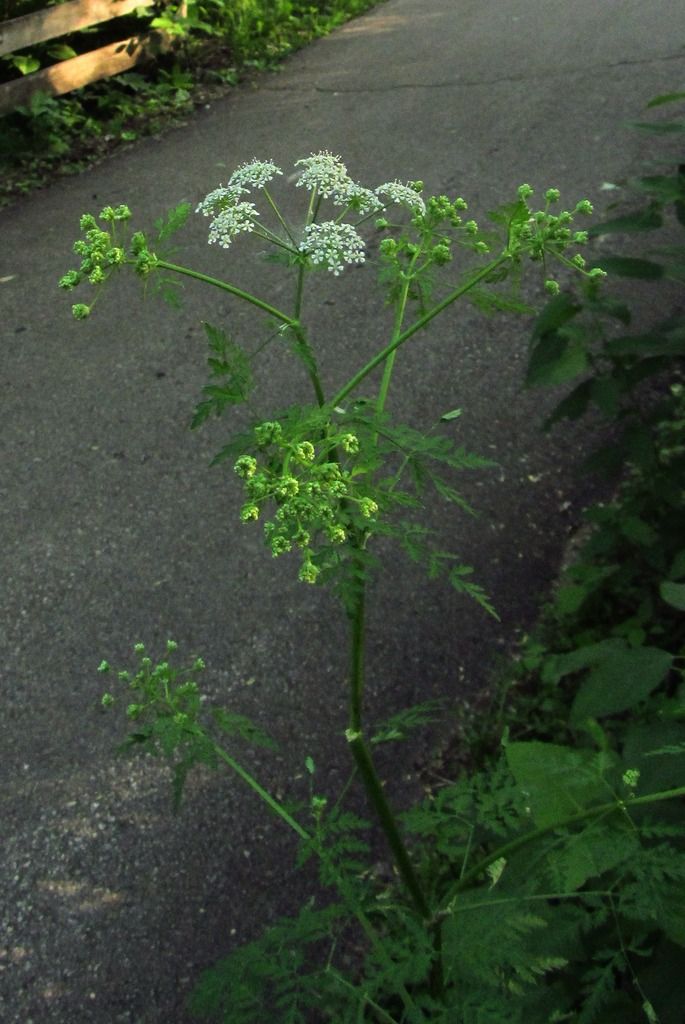
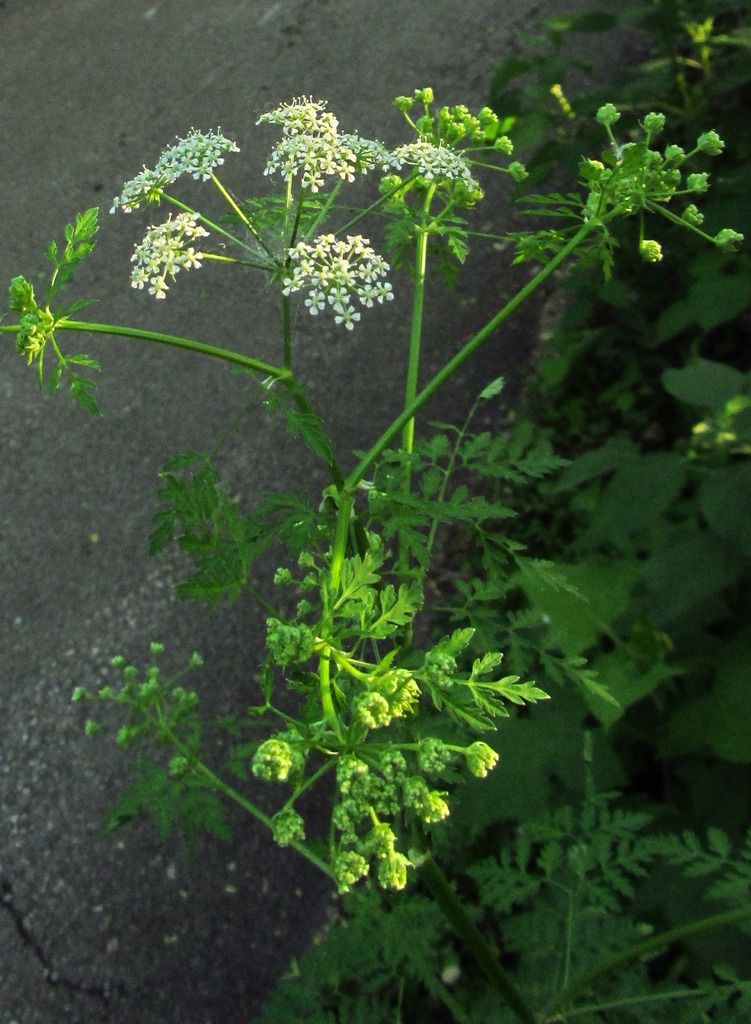
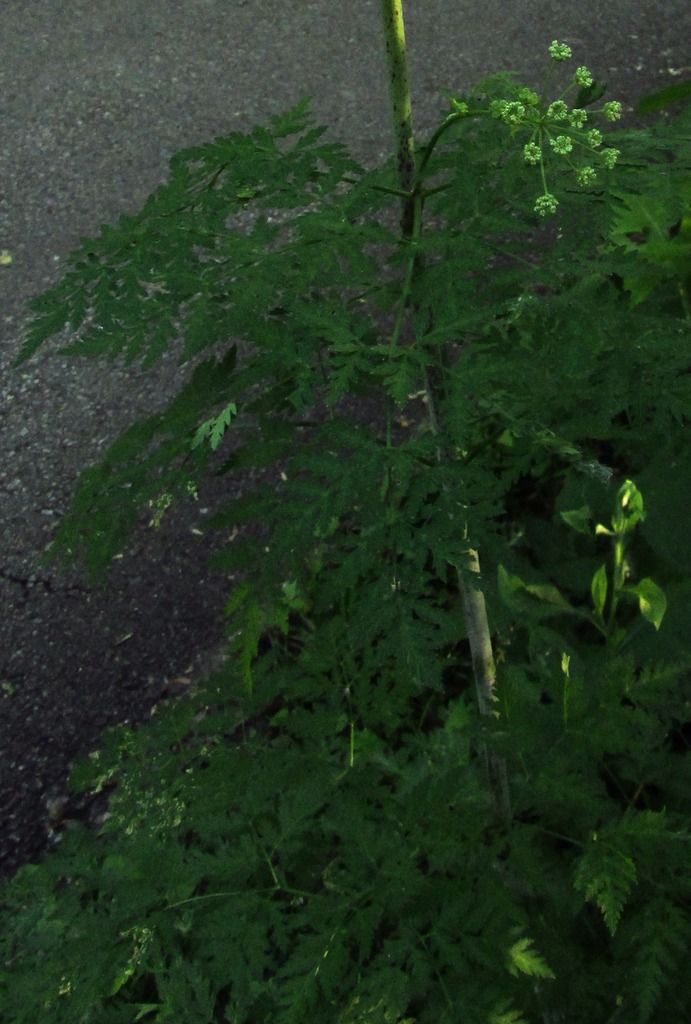
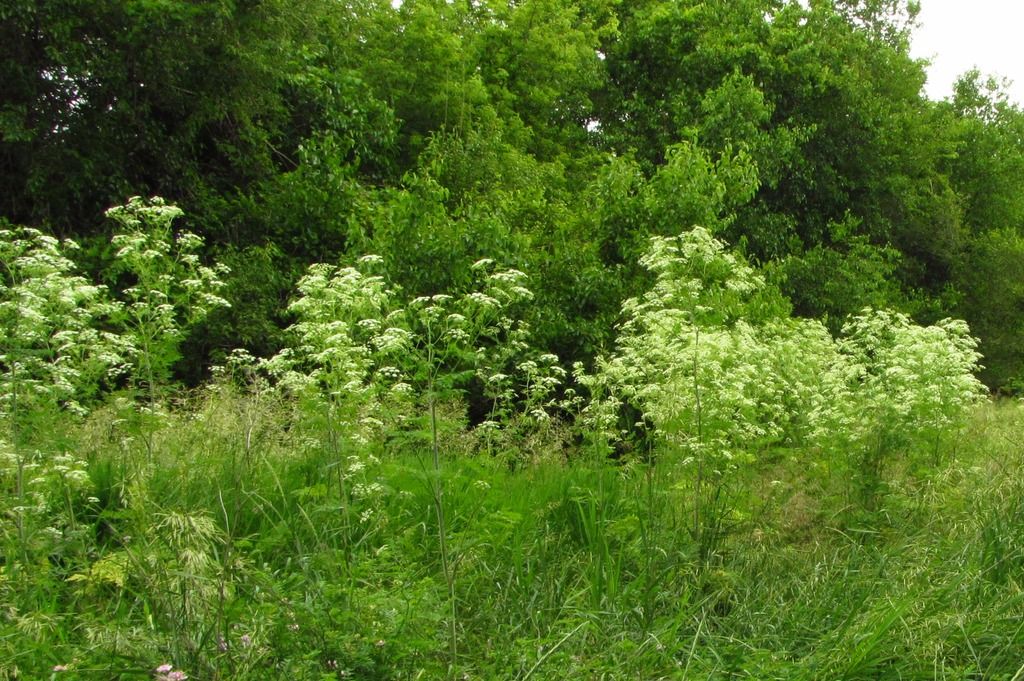

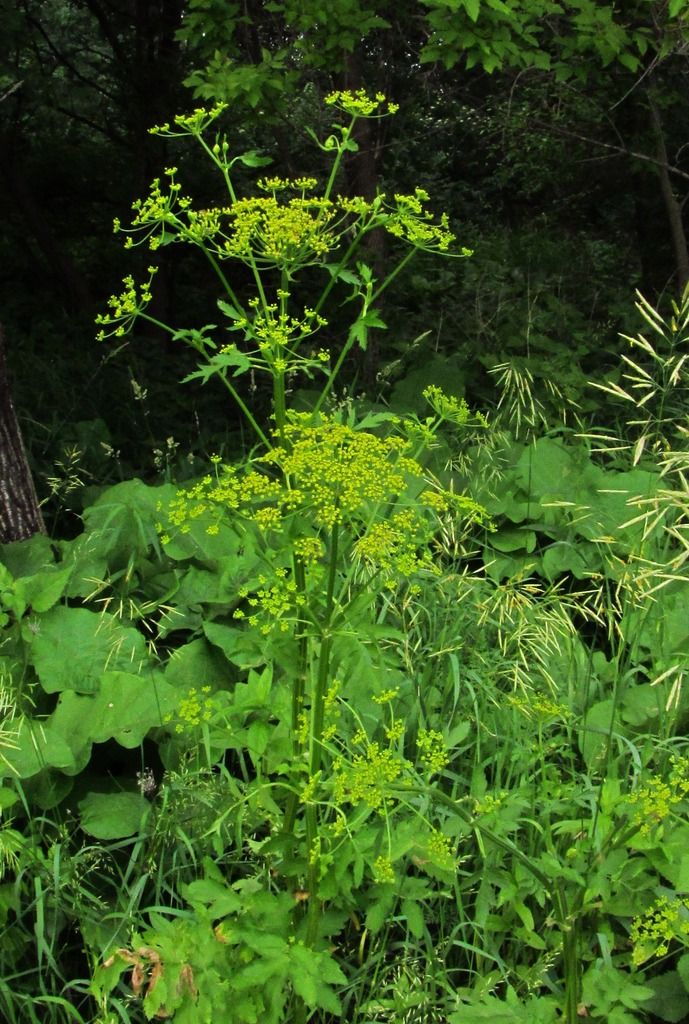
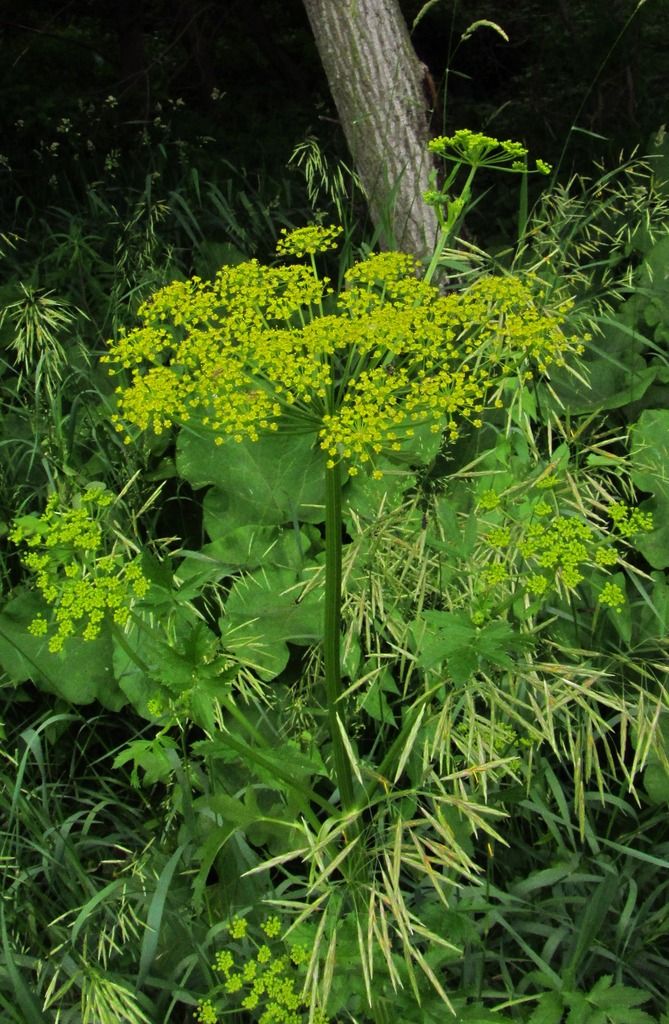
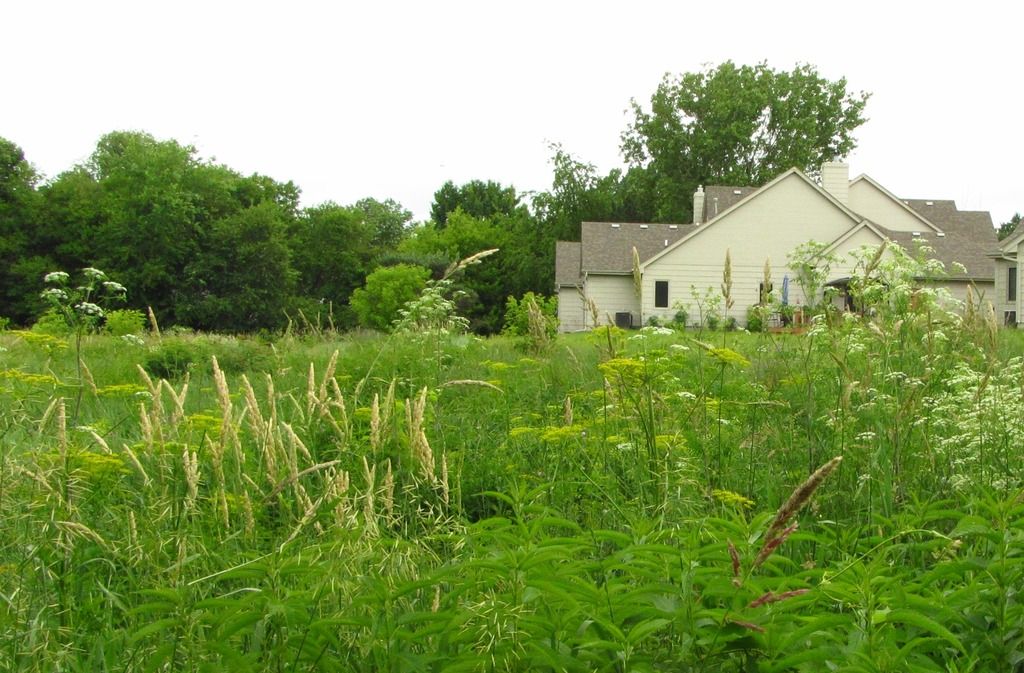
1 Comment
Public service
Thank you for educating readers and possibly preventing serious injuries. It has been interesting to watch new invasives move into new parts of Iowa during my lifetime. Poison hemlock has definitely been taking over new areas. Wild parsnip, on the other hand, was already around decades ago.
PrairieFan Sat 29 Apr 12:49 AM